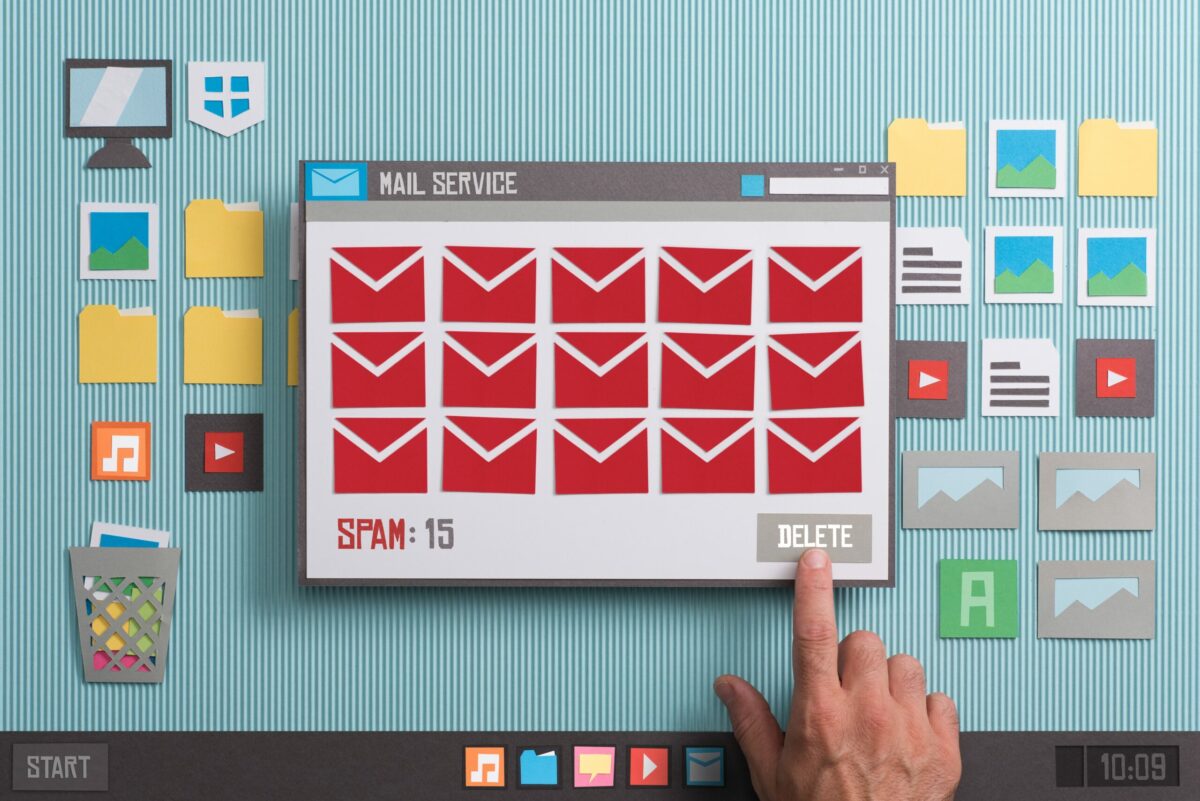Email is one of the most used methods of collaboration in the workplace. Unfortunately, it’s also become one of the most popular methods for cyberattack. From phishing emails to emails with malicious attachments, email can be as vulnerable as it is essential.
That’s why teaching your employees good security habits is incredibly helpful in protecting against email-based threats. They learn how to spot potential threats, but with how much we rely on email, more can be more when it comes to cybersecurity.
Luckily, there are two tools that can provide big benefits to companies using Microsoft 365 and without big costs. Along with examples of common email security issues, here’s how multi-factor authentication and Microsoft Defender for Office 365 protect your organization’s email from cyberattacks.

Email Security Issue: Compromised Passwords
Traditionally when signing into your email, you use a username and password. However, with cyber threats growing and becoming more advanced, relying on a one-factor sign-in is not the best way to protect your email. Hackers are getting better at compromising passwords.
How to protect your organization’s email from compromised passwords?
So, if usernames and passwords aren’t enough anymore, how do you secure email? Cue, multi-factor authentication (or MFA for short).
When signing into your email, MFA will prompt you for an extra security factor on top of your username and password. It can be a passcode generated by an app on your phone, facial recognition, or a personal security question.
By asking for another piece of information to further verify your identity, a hacker with a stolen password cannot gain access to your email.

Email Security Issue: Phishing
Phishing is a technique used by hackers to lure people into giving up sensitive information. It’s effective because they pose as trusted sources like people you know or companies that you’d recognize. The hackers fake parts of the email to disguise the attack, and even the best-trained employees will miss red flags.
How to protect your organization’s email from phishing?
If hackers can trick people into the desired action, what can the organization do to spot the tricks and boost email security? Microsoft Defender for Office 365 works to identify phishing attempts and filter them out before reaching your inbox. The anti-phishing policies protect by:
- Looking at the “From” for signs of impersonation – is the sender’s name or email address similar but not exact?
- Sending a tip for you to exercise caution when receiving an email from an unfamiliar address
- Learning sending and receiving patterns over time to build a map of “usual” in order to detect anything that appears to be impersonated.
Email Security Issue: Malware
Microsoft 365 protects all emails from broad, known attacks. This base layer of spam protection, Exchange Online Protection, is built into all subscriptions that include Exchange Online (hosted email). It’s a solid step in preventing known threats from reaching your inbox, but it still leaves you vulnerable.
How to protect your email from malware?
As threats become more sophisticated, your organization’s defense must do the same. Hackers often rely on delivering malware through a link to a malicious website, a link to download a file or a malicious attachment. Microsoft Defender for Office 365 adds protection by:
- Checking links for malicious websites and unsafe file downloads
- Reviewing attachments in a virtual environment for potential threats
This helps to uncover and protect against any zero-day threats (malware that is either too new to be detected or designed to evade traditional spam filters).
Security for Microsoft 365: Protect Your Organization’s Email
Many small businesses leverage Microsoft 365 for cloud-based email because it’s a cost-effective, robust solution. Your organization can do the same for email security – use affordable Microsoft solutions to protect against unauthorized access, phishing, and other social engineering attacks, and malware.
Multi-factor authentication and Microsoft Defender for Office 365 are part of the Microsoft 365 subscriptions:
- MFA comes with all Microsoft 365 subscriptions; more advanced features require an upgrade to Azure Active Directory Premium Plan 1 or 2 (can be bought standalone or included with other subscriptions like Microsoft 365 Business Premium, E3, E5, or Enterprise Mobility & Security)
- Microsoft Defender for Office 365 Plan 1 or Plan 2 (or included in Enterprise Mobility & Security Plan 2 or Microsoft 365 E5)
If you’re looking for ways to improve security for your organization, we’re here to help! Contact us today.


